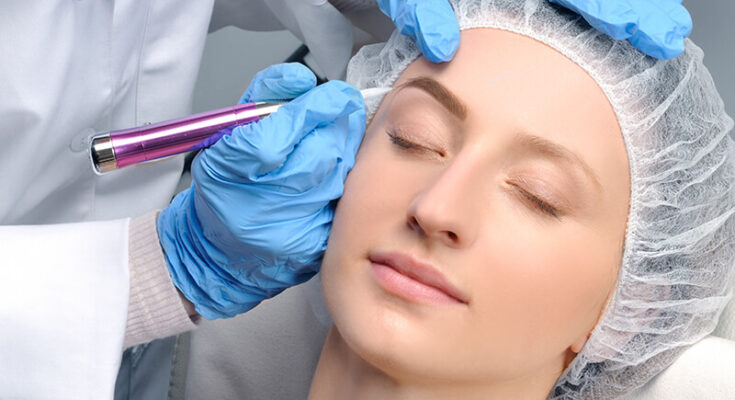Freshly done eyebrow tattoos look amazing – the crisp lines and perfect color are the stuff of social media dreams. But, sometimes those beautiful brows can change over time, fading into an unwelcome blue or greyish shade. If you’re curious about why this happens, or you want to ensure your eyebrow tattoo maintains its intended color, you’re in the right place. Understanding the reasons behind this color shift is essential for both tattoo artists and anyone considering this cosmetic procedure.
Why Do Some Eyebrow Tattoos Look Blue During Healing?
The Healing Process: After getting an eyebrow tattoo, your skin goes through a natural healing process. This includes:
Extreme Darkness: Initially, the color looks very dark and intense.
Scabbing and Flaking: A scab forms, then peels off.
Ghosting Phase: The pigment appears much lighter, often with a bluish tone. This is most obvious in people with fair skin when darker pigments are used.
Why The Blue Tint?
New Skin Layer: As your skin heals, a new layer forms over the pigment. This temporarily thicker layer can distort the color, making it appear bluish.
Tyndall Effect: If the pigment is placed a bit too deep in the skin, combined with this increased skin layer during healing, it creates an optical effect called the Tyndall Effect. This effect can make dark pigments appear bluish.
Don’t Panic – It’s Temporary: The bluish tint is usually a normal part of the healing process and should fade as your skin fully recovers.
Why Do Eyebrow Tattoos Stay Blue Even After Healing?
Sometimes, even after an eyebrow tattoo is fully healed, that unwanted bluish tint doesn’t go away. Here are the common reasons why:
Mismatched color Tones: When a cool-toned pigment (think those with a slightly ashy undertone) is used on someone who also has cool-toned skin, the color can sometimes fade into a bluish hue.
Black Pigment Problems: Pure black pigments, especially on people with neutral or cool skin tones, tend to fade into a bluish color.
Too Deep: If the pigment is placed too deeply into the skin, something called the Tyndall effect can happen. This effect is basically how light scatters through skin layers, and it can make dark colors look blueish.
Old or Low-Quality Pigments: Some older pigments, or low-quality ones, have ingredients that naturally break down into bluish colors.
| Myth: Topical Anesthetic Creams Contribute to Eyebrow Tattoos Turning Blue Numbing creams do NOT cause eyebrow tattoos to turn blue. Blueish discoloration can happen due to factors such as pigment choice, skin undertones, and pigment placement depth. Topical anesthetic numbing cream can help minimize discomfort during your permanent makeup procedure. These specialized creams come in primary and secondary types for different stages of the process. Choosing the right cream is important due to variations in strength, sensitivity, and potential allergies. One popular option is Dr. Numb Topical Anesthetic Cream. However, it’s crucial to always consult your PMU artist for a personalized choice and avoid using any numbing product without professional guidance. |
How to Prevent Your Eyebrow Tattoo from Turning Blue?
There are a few key things that can help prevent that dreaded blueish shift in your eyebrow tattoo:
Choose the Right Artist: A skilled artist will know how to place the pigment at the right depth and choose a color that complements your skin’s natural undertones.
Let it Heal Properly: Following your artist’s aftercare instructions is super important. Don’t pick at scabs and keep the area clean for a smooth healing process.
Protect from the Sun: Just like regular tattoos, UV rays can fade eyebrow tattoos and cause color changes. Always wear sunscreen or a hat when you’re outside.
Be Careful with Skincare: Some skincare products, especially those with exfoliating ingredients, can fade tattoos over time. Talk to your artist or dermatologist for recommendations.
Conclusion
A comprehensive comprehension of the factors contributing to blue shifts in eyebrow tattoos empowers both practitioners and clients to navigate challenges effectively. By prioritizing proper technique, pigment selection, and diligent post-care measures, individuals can optimize the longevity and vibrancy of their permanent makeup results while minimizing the risk of undesirable color shifts.




